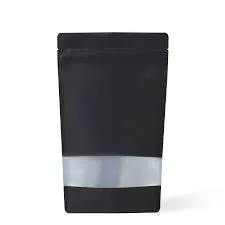- Afrikaans
- Albanian
- Amharic
- Arabic
- Armenian
- Azerbaijani
- Basque
- Belarusian
- Bengali
- Bosnian
- Bulgarian
- Catalan
- Cebuano
- chinese_simplified
- chinese_traditional
- Corsican
- Croatian
- Czech
- Danish
- Dutch
- English
- Esperanto
- Estonian
- Finnish
- French
- Frisian
- Galician
- Georgian
- German
- Greek
- Gujarati
- haitian_creole
- hausa
- hawaiian
- Hebrew
- Hindi
- Miao
- Hungarian
- Icelandic
- igbo
- Indonesian
- irish
- Italian
- Japanese
- Javanese
- Kannada
- kazakh
- Khmer
- Rwandese
- Korean
- Kurdish
- Kyrgyz
- Lao
- Latin
- Latvian
- Lithuanian
- Luxembourgish
- Macedonian
- Malgashi
- Malay
- Malayalam
- Maltese
- Maori
- Marathi
- Mongolian
- Myanmar
- Nepali
- Norwegian
- Norwegian
- Occitan
- Pashto
- Persian
- Polish
- Portuguese
- Punjabi
- Romanian
- Russian
- Samoan
- scottish-gaelic
- Serbian
- Sesotho
- Shona
- Sindhi
- Sinhala
- Slovak
- Slovenian
- Somali
- Spanish
- Sundanese
- Swahili
- Swedish
- Tagalog
- Tajik
- Tamil
- Tatar
- Telugu
- Thai
- Turkish
- Turkmen
- Ukrainian
- Urdu
- Uighur
- Uzbek
- Vietnamese
- Welsh
- Bantu
- Yiddish
- Yoruba
- Zulu
Exploring the Applications and Benefits of Microfibrillated Cellulose in Various Industries
The Promise of Microfibrillated Cellulose A Revolutionary Biomaterial
Microfibrillated cellulose (MFC) is a fascinating material that has garnered significant attention due to its unique properties and wide range of applications. Derived from natural cellulose fibers, MFC is produced through mechanical and chemical treatment processes that break down cellulose into micro-sized fibrils. These fibrils exhibit exceptional strength, high surface area, and remarkable compatibility with various other materials, making MFC a versatile player in multiple industries.
What is Microfibrillated Cellulose?
Microfibrillated cellulose is a form of cellulose that has been processed into fibrils measuring 10 to 100 nanometers in diameter and several micrometers in length. Because cellulose is one of the most abundant biopolymers on Earth, sourcing it from plants, particularly wood and agricultural residues, is both sustainable and eco-friendly. The production process not only helps in creating a valuable product but also promotes the circular economy by utilizing waste materials.
The exceptional mechanical properties of MFC derive from its highly crystalline structure, which provides strength comparable to that of steel when considering its weight. Due to its nanoscale characteristics, MFC has a very high surface area that allows for increased interaction with other materials, enhancing adhesion, and subsequently improving the mechanical properties of composites.
Applications of Microfibrillated Cellulose
MFC’s unique properties open the door to a myriad of applications across different sectors. One of the most promising areas is in the field of packaging. MFC can be used to create biodegradable films and coatings that can replace petroleum-based plastics, contributing to sustainable packaging solutions. Such innovations not only reduce plastic pollution but also lower the carbon footprint associated with traditional packaging materials.
In the construction industry, MFC is being explored as an additive for cement and concrete. When incorporated, it can improve the mechanical strength and durability of these materials, while also enhancing their water retention properties. This application not only enhances building materials but also supports greener construction practices by reducing the need for additives derived from fossil fuels.
The pharmaceutical and food industries also recognize the potential of MFC as a thickening and stabilizing agent. In pharmaceuticals, MFC can enhance the delivery and effectiveness of drug formulations due to its ability to form gels and stabilize emulsions. In the food sector, MFC can improve the texture and consistency of products, providing a healthier alternative to synthetic thickeners.
microfibrillated cellulose

Moreover, MFC’s biocompatibility makes it an excellent candidate for use in biomedical applications. Researchers are investigating its use in tissue engineering, where MFC can serve as scaffolding for cell growth, thereby offering potential solutions for regenerative medicine.
Environmental Benefits
One of the most significant advantages of microfibrillated cellulose is its environmental friendliness. As a biodegradable material, MFC can break down naturally, reducing the burden of waste on landfills. Furthermore, its production process can utilize non-edible plant materials, which supports food security and promotes sustainable land use practices.
The sourcing of cellulose from renewable resources aligns with global sustainability goals, as it involves using agricultural residues and by-products, thus minimizing waste and maximizing resource efficiency. This sustainable approach contributes to a more circular economy and reinforces the importance of biodegradable materials in mitigating environmental problems.
Challenges and Future Directions
Despite its potential, there are challenges that hinder the widespread adoption of microfibrillated cellulose. The production process can be energy-intensive and costly, and researchers are continuously seeking methods to optimize these processes. Additionally, scaling up production while maintaining quality and cost-effectiveness remains a priority.
Future research is likely to focus on advanced nanomaterials and the possibilities of combining MFC with other biopolymers to develop multi-functional materials. As technology advances and innovations emerge, the potential applications of microfibrillated cellulose will undoubtedly expand, leading to new opportunities in sustainable material development.
In conclusion, microfibrillated cellulose stands at the forefront of sustainable materials science. Its remarkable properties and versatility make it a pivotal component in the quest for innovative solutions across various industries. As efforts to harness its potential intensify, MFC may well become a cornerstone of future sustainable practices, steering us toward a greener planet.













